What is facet and where is it used?
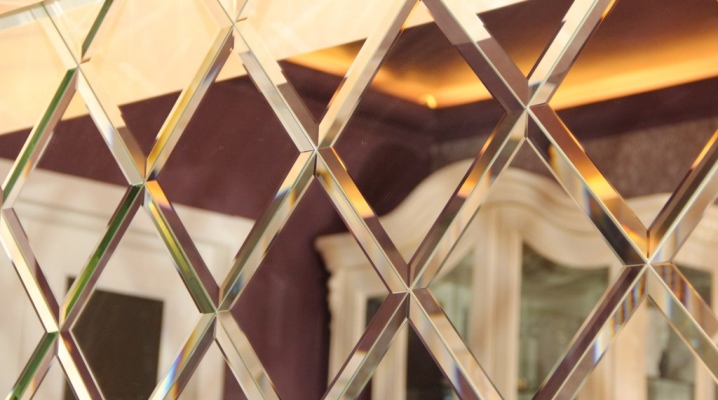
Glass beveling is a common technique used to frame glass surfaces. Various types of edge treatments for glass, stained glass, furniture inserts and mirrors give them a refined and finished look.
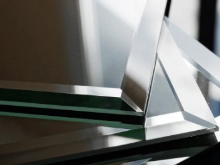
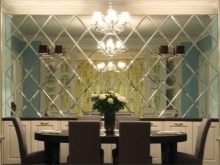
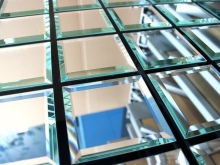
What it is?
Facet is a French word translated as "faceted surface". In industry, this is the name of the technology for processing mirrors or glasses. Delicate material is trimmed at an angle of up to 45 degrees and polished to a high shine. The method was originally used in jewelry. In the middle of the 19th century, it began to be used to frame glass surfaces.
Designed with well-chosen lines, stained-glass windows, windows and mirrors stand out as separate bright decorative elements in the interior. Beams of light play on the surface, and a light and spectacular glow spreads in the room. The technique of final finishing of materials has fully justified itself from the point of view of aesthetics. For this reason, the technology has continued to evolve, and today cut framing in the interior is in high demand.
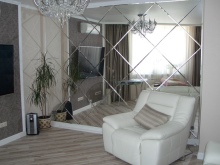
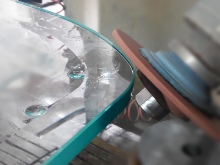

There are other benefits as well. Non-sharp edges protect expensive products during transportation, prevent cracks and small chips. Safety is increased many times over, since there are no cuts during the use of treated glass.
It is convenient to place faceted planes in a frame, mount together with other decorative elements or insert into furniture.
In addition, experts note other qualities of the facet.
- Ecological cleanliness. When processing, there are absolutely no compounds hazardous to health.
- Stability in operation, as well as reliability and durability.
- Protection from moisture. The edges are not subject to abrasion due to the humidity of the environment.
- Inert reaction to harmful substances such as solutions of acids and alkalis.
- Resistance to temperature changes, pressure drops.
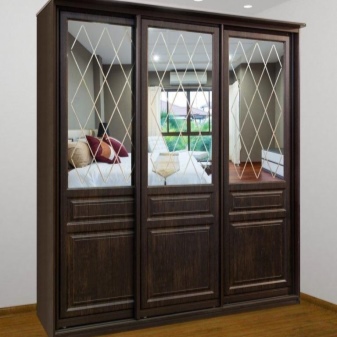
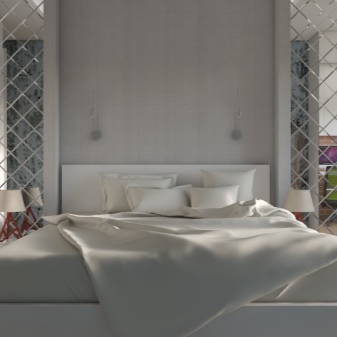
In the last century, glass was processed by hand, the technique was quite laborious. Cutting along the edge literally by a millimeter required considerable effort, time and experience from the master. To date, a machine has been invented, on which the cutting operation is successfully performed. The required flange width and slope are automatically set. The minimum edge is 5 mm, and the maximum is 50. In this case, the cutting angle is possible in the range from 1 to 45 degrees.
At the initial stage, the material is cut into pieces of the desired size. Then they gradually grind along the edge on the machine, grind and deeply polish. Intricate pieces are more difficult to make, more expensive, but look like real works of art.
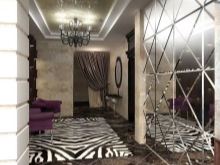

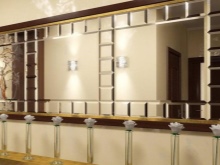
Where is it used?
Artistic processing of glass and mirrors has become a widespread decorative technique. The creation of a fashionable and unusual, high-quality design cannot do without it. A beautiful framed mirror, a stylish panel of several elements in a dining room or living room are examples of application in a modern interior. A correctly chosen frame made of metal or wood will accentuate the shine of the surface and the design of the product. Beveled edges are much more convenient to insert into any frame or place in furniture.
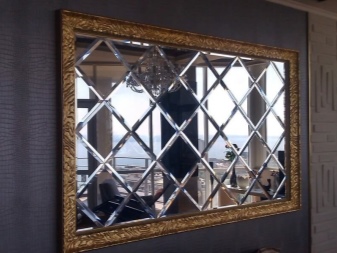
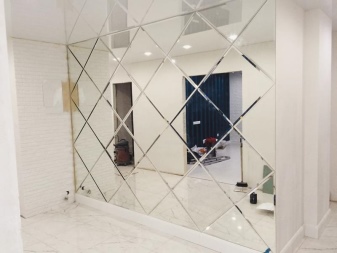
Cutting is used in the manufacture of double-glazed windows, looks great on cabinet doors and decorative staircase steps. After processing, mirrors can remain transparent, as well as acquire a matte shade, convex or concave models can be produced. Coloring of surfaces is carried out with acrylic and other persistent dyes. Figured products from mirrors can be made to order, giving them a fancy shape - figures of people, silhouettes of animals and fairy-tale characters for the nursery.
For the kitchen, you can purchase an elegant countertop - in the form of a rectangle, oval or rhombus, and for kitchen facades - multi-colored faceted glass. The latest fashion trend is mirrored tiles with beveled edges that will help decorate a bedroom or nursery. In the hallway, a cast massive mirror with processing will look perfect.
Large-scale stained-glass windows and panels are popular in luxurious interiors.
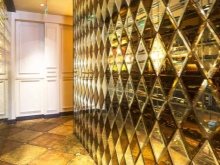
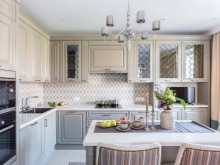
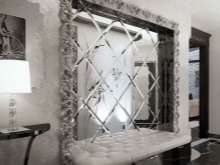
Description of species
The choice of products among various types will help a professional designer to carry out.
- Straightforward. The straight-line type of cut is performed at a right angle on medium-sized products, with side dimensions of at least 200 mm. The thickness of the blade is from 3 to 16 mm. The thicker the glass, the more additional polishing is required.
- Curvilinear. Such processing allows for a high density of the product, from 10 mm to 20 mm. In this case, the slope of the facet facet starts from 3 mm and reaches 4 cm. Suitable for large and non-standard glasses, with a size of up to 50 cm on the larger side. This is how oval and round arched specimens are faceted. The bevelling process involves adjusting the angle and cut line.
- Double. Needed in design to create layering effect. The parts are connected to each other, having made a preliminary outline of each of them. The edge consists of two stripes, one narrow and the other wide, and the light is refracted in them in different ways. The result is an amazing brilliant shine.
- Double-sided cut. The most complex type, when the glass is cut on both sides, use the imposition of a small facet on a large one. Cutting is done by professional craftsmen, cutting the material in turn at different angles. This is how a complex stained glass window is created with a combination of parts, matching them by color.
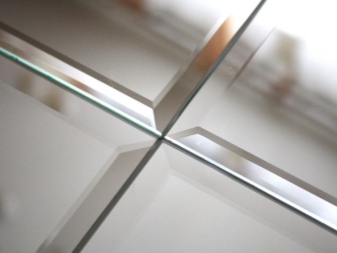
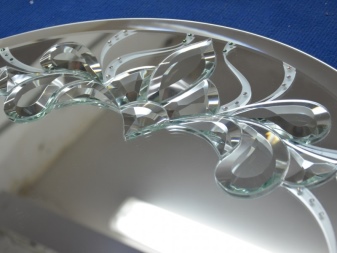
What interior styles does it suit?
There is not a single design style that does not include treated glass decoration elements. In what style to decorate the interior depends only on the taste and wishes of the owner of the house or apartment. At the same time, sometimes it is enough to do with a few changes, add a few new elements to remove the ordinariness from the interior, and bring a fresh note.
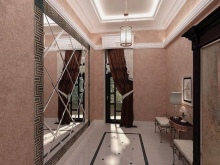
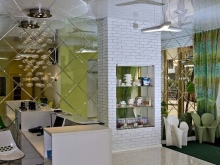
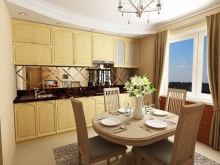
Classic
Many people take the classic approach, time-tested and unobtrusive. The main element of the classic interior is a mirror in an elaborate frame. The surface is allowed in any suitable shape. The more spacious the room, the larger the mirror and frame should be - gold or bronze. If the room is small in size, a medium-sized mirror in a sophisticated spectacular frame is enough.
In the extensive kitchen-living room, partitions of faceted tiles are installed, which have the function of zoning the space.
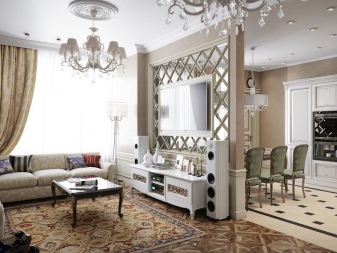
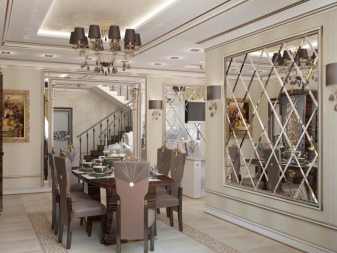
English house
A solid look and cozy design are the attributes of the English style in design, known to everyone. You should pay attention to how harmoniously fit into such a house objects with a facet finish. It is easy to see that gilt-framed mirrors tend to adorn the area above the fireplace. They are often placed over the sofa in the living room, where the family gathers in the evenings.
A thin facet cut is present everywhere in the interior: on the planes of interior doors, on glass windows, surfaces of cabinets and dressers. This further emphasizes the beauty and high cost of wooden furniture in the office.

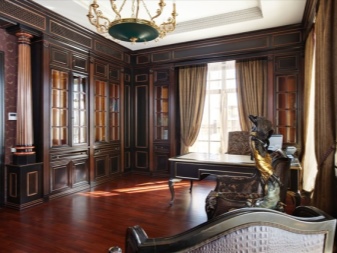
American style
It offers large and bright rooms with luxurious decor. The American approach is distinguished by a craving for shiny and white surfaces, the widespread use of a variety of glass products.Double-cut frosted glass is more common in rooms; doors and partitions are made from it, replacing wooden structures. Light mirrors of intricate shape in exquisite frames coexist in the American interior with graceful paintings on the walls. The design is complemented by crystal lamps, framed in bright metal and bronze.
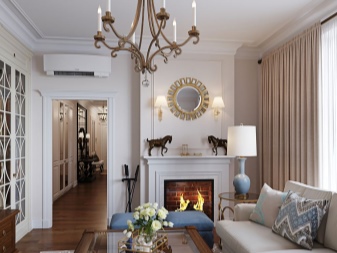
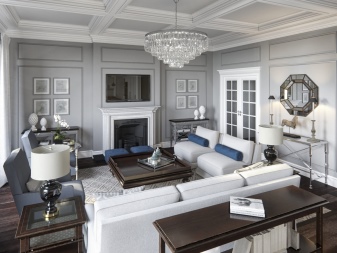
Art deco
On the one hand, a style with such a name suggests room for the designer's imagination, and on the other, any inappropriate element can break the harmony. Indoors, the visual effect of expanding the space is often used due to the use of mirrored beveled tiles. The mirrors are framed in artistic frames in the form of a sun with white and yellow rays, creating a contrast between the gloss and the muted range of the main decoration. They decorate the bedroom and living room in the house.
Light refracts and plays on the shiny surfaces of walls and cabinets, on a mirrored inlaid floor.
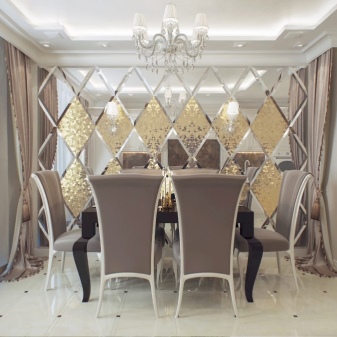

Modern
Accents in the form of round mirrors in rectangular frames or a composition of several parts are perceived as an attribute of style. They are used to decorate the living room or bedroom. In the center of the dining room, you can place a large table with a faceted frame. Zoning with partitions is also appropriate, as well as floor panels.
In small rooms, spectacular elements will become cozier, and the space will visually expand.
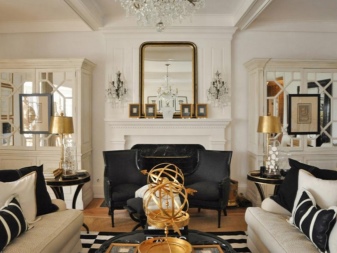
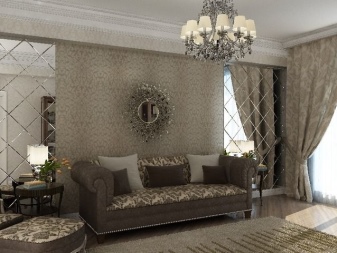
Loft
Brick, wood, concrete and other natural looking materials are associated with this style. And another one just as well fits them - glass. Solid furniture and brickwork come to life next to a round mirror in a wide frame. The main thing for a designer is to correctly select glass furniture, the shape of a partition or a console.
Zoning is often used in spacious rooms, studio apartments, loft-style.
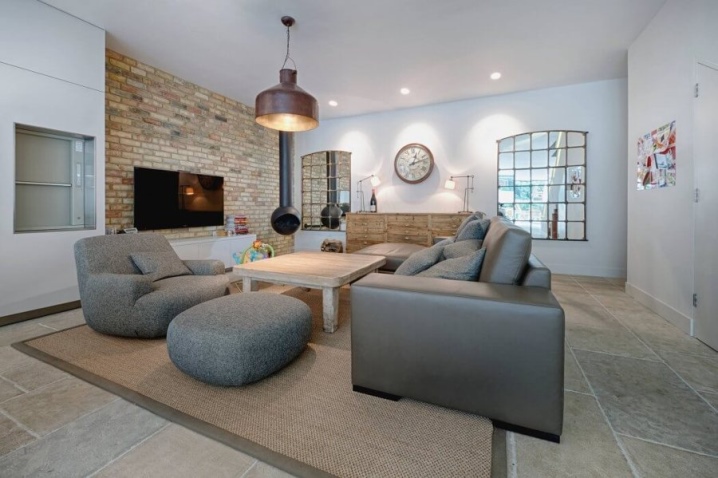













The comment was sent successfully.